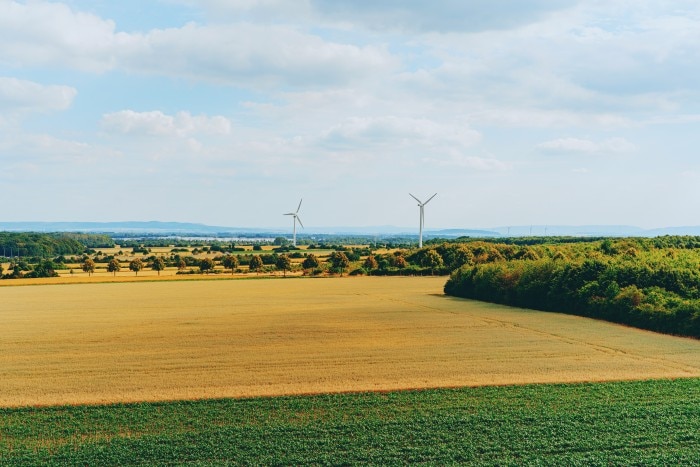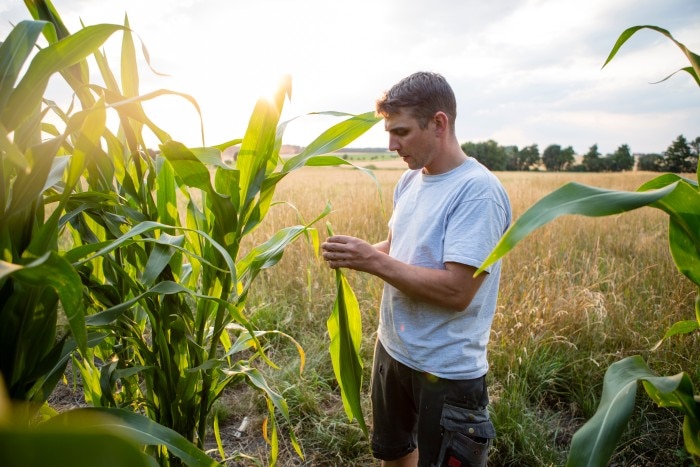MENU
FJ | FJD
-
-
-
- Forum Labo 2025
- Advanced Therapies Week (ATW) 2025
- SLAS Europe 2025
- Medlab Middle East 2025
- Biologics World Nordics 2025
- Bioprocessing Summit Europe 2025
- BioProcess International Europe 2025
- ASIA LABEX: The Lab Show 2025
- SLAS International 2025
- ISEV 2025
- Future Labs Live 2025
- Cell 2025
- ASIA LABEX: The Lab Show 2025
-
-
-
- Forum Labo 2025
- Advanced Therapies Week (ATW) 2025
- SLAS Europe 2025
- Medlab Middle East 2025
- Biologics World Nordics 2025
- Bioprocessing Summit Europe 2025
- BioProcess International Europe 2025
- ASIA LABEX: The Lab Show 2025
- SLAS International 2025
- ISEV 2025
- Future Labs Live 2025
- Cell 2025
- ASIA LABEX: The Lab Show 2025
FJ | FJD
-
- Benchtop Centrifuges
- Floor-Standing Centrifuges
- Refrigerated Centrifuges
- Microcentrifuges
- Multipurpose Centrifuges
- High-Speed Centrifuges
- Ultracentrifuges
- Concentrator
- High-Speed and Ultracentrifuge Consumables
- Centrifuge Tubes
- Centrifuge Plates
- Device Management Software
- Sample and Information Management
-
- All Pipettes, Dispensers & Automated Liquid Handlers
- Mechanical Pipettes
- Electronic Pipettes
- Multi-Channel Pipettes
- Positive Displacement Pipettes & Dispensers
- Automated Pipetting
- Bottle-Top Dispensers
- Pipette Controllers
- Pipette Tips
- Automation Consumables
- Dispenser & Pipette Accessories
- Automation Accessories
- Dispenser & Pipette Services
You are about to leave this site.
Please be aware that your current cart is not saved yet and cannot be restored on the new site nor when you come back. If you want to save your cart please login in into your account.
No results found
Search Suggestions

Cultural Change in Cropland
Beyond Science
- Lab Life
- Off the Bench
- Exploring Life
A new study is outlining the future of agriculture in five scenarios. An overview of the most important recommendations for action.
Reducing agricultural greenhouse gas emissions within the EU by more than half by 2050 and simultaneously increasing biodiversity and food security: this proposition, which is reminiscent of squaring the circle, has in fact been modeled scientifically by the think tank Agora Agriculture in their study “Agriculture, forestry and food in a climate neutral EU”. For the first time, the following areas were considered: climate gas emissions, food policy, and the future of forests. The result is a positive vision for the fields and forests of Europe.
Read more
Read less
Back to the tree
Long rows of trees grow on and beside the fields of the future; they provide nuts, fruit and valuable wood for furniture. Agroforestry, the modern child of the traditional meadow orchard, provides food and shelter to animals, small and big, and thus strengthens biodiversity, improves soil quality and protects the climate: if, according to calculations by Agora Agriculture, trees were planted on eight percent of arable land in the EU, up to 660 million tons of CO2 could be stored. If the wood from these trees were to replace fossil fuels, an additional 130 million tons of CO2 emissions could be avoided annually – almost as much as is released into the atmosphere by the heating systems of German homes.
Long rows of trees grow on and beside the fields of the future; they provide nuts, fruit and valuable wood for furniture. Agroforestry, the modern child of the traditional meadow orchard, provides food and shelter to animals, small and big, and thus strengthens biodiversity, improves soil quality and protects the climate: if, according to calculations by Agora Agriculture, trees were planted on eight percent of arable land in the EU, up to 660 million tons of CO2 could be stored. If the wood from these trees were to replace fossil fuels, an additional 130 million tons of CO2 emissions could be avoided annually – almost as much as is released into the atmosphere by the heating systems of German homes.
Read more
Read less
More moors
These days, moors are known to many of us only through old horror movies – even though these permanently wet ecosystems play an essential role in the future of our species. After all, moors are the most effective CO2 storage units on Earth, binding twice as much carbon as all forests combined. The problem: in the case of drained moors, this effect is reversed, and CO2 is released into the atmosphere. For this reason, a mere two percent of arable land in the EU is responsible for 20 percent of agricultural greenhouse gas emissions. The study reports that if 80 percent of moors could be returned to wetlands, 70 million tons of CO2 could be avoided annually. This is roughly the same amount that Austria emits every year.
These days, moors are known to many of us only through old horror movies – even though these permanently wet ecosystems play an essential role in the future of our species. After all, moors are the most effective CO2 storage units on Earth, binding twice as much carbon as all forests combined. The problem: in the case of drained moors, this effect is reversed, and CO2 is released into the atmosphere. For this reason, a mere two percent of arable land in the EU is responsible for 20 percent of agricultural greenhouse gas emissions. The study reports that if 80 percent of moors could be returned to wetlands, 70 million tons of CO2 could be avoided annually. This is roughly the same amount that Austria emits every year.
Read more
Read less
Moss to money
The rewetting of moors must of course pay off for farmers; one option would be the installation of large solar panels, as suggested by the authors of the study. Another option would be the cultivation of moisture-loving plants such as reed, cattail, bulrush or peat moss. These can then be used as planting soil, or manufactured into paper and cardboard, or climate-friendly insulating and packaging materials. Since peat moss is so good at storing moisture, it is already used to bind oil spills caused by tanker accidents. This type of farming, known as paludiculture, is still in the testing phase. According to Agora Agriculture, in addition to premiums for rewetting, it will also take governmental support to establish agriculture on moors.
The rewetting of moors must of course pay off for farmers; one option would be the installation of large solar panels, as suggested by the authors of the study. Another option would be the cultivation of moisture-loving plants such as reed, cattail, bulrush or peat moss. These can then be used as planting soil, or manufactured into paper and cardboard, or climate-friendly insulating and packaging materials. Since peat moss is so good at storing moisture, it is already used to bind oil spills caused by tanker accidents. This type of farming, known as paludiculture, is still in the testing phase. According to Agora Agriculture, in addition to premiums for rewetting, it will also take governmental support to establish agriculture on moors.
Read more
Read less
Use it for building, not for heating
Nothing warms your nose and soul better in winter than a crackling open fire. According to the study authors, however, the burning of wood and other biomass is a double-edged sword when it comes to climate protection. While reforested areas are able to store the CO2 released, this will take decades – during which time the carbon dioxide from fireplaces and pellet stoves will exert the climate-warming effect on a global scale. For this reason, governments should apply regulations and support measures to ensure that wood is not primarily burned but rather processed into long-lived products: be it building blocks for chemicals, plastics or home construction.
Nothing warms your nose and soul better in winter than a crackling open fire. According to the study authors, however, the burning of wood and other biomass is a double-edged sword when it comes to climate protection. While reforested areas are able to store the CO2 released, this will take decades – during which time the carbon dioxide from fireplaces and pellet stoves will exert the climate-warming effect on a global scale. For this reason, governments should apply regulations and support measures to ensure that wood is not primarily burned but rather processed into long-lived products: be it building blocks for chemicals, plastics or home construction.
Read more
Read less
More veggies
Climate-friendly agriculture will also stand and fall with a change in our nutritional habits: mid-century, only half as much meat will be on the tables throughout the EU – such is the vision of Agora Agriculture. A combination of standards, funding and labels will ensure better lives for cows, pigs and poultry. The decrease in meat consumption will lead to a reduction in imports for animal feed, as well as agricultural areas dedicated to the cultivation of feedstock, by half. The latter is then freed up for other crops. To achieve this, plant-based products must be available at a cheaper price, and be more accessible than animal products, demand the authors of the study. Supermarkets must place them in prime locations, and cafeterias in companies and schools must include more delicious vegetable-based dishes on their menus.
Climate-friendly agriculture will also stand and fall with a change in our nutritional habits: mid-century, only half as much meat will be on the tables throughout the EU – such is the vision of Agora Agriculture. A combination of standards, funding and labels will ensure better lives for cows, pigs and poultry. The decrease in meat consumption will lead to a reduction in imports for animal feed, as well as agricultural areas dedicated to the cultivation of feedstock, by half. The latter is then freed up for other crops. To achieve this, plant-based products must be available at a cheaper price, and be more accessible than animal products, demand the authors of the study. Supermarkets must place them in prime locations, and cafeterias in companies and schools must include more delicious vegetable-based dishes on their menus.
Read more
Read less
Out of the bin
131 kilograms of food – this is how much each EU citizen wastes every year – equivalent to the weight of 100 chickens. By 2045, this amount could be reduced by half, states the study. This could be achieved through innovative prognosis methods aimed at better coordination of supply and demand; through more appropriate portion sizes on supermarket shelves; and through intensified research into how unavoidable waste may be utilized as a resource and thus live a second, and therefore longer, life in the form of cosmetics, medication, packaging material or bioceramics.
131 kilograms of food – this is how much each EU citizen wastes every year – equivalent to the weight of 100 chickens. By 2045, this amount could be reduced by half, states the study. This could be achieved through innovative prognosis methods aimed at better coordination of supply and demand; through more appropriate portion sizes on supermarket shelves; and through intensified research into how unavoidable waste may be utilized as a resource and thus live a second, and therefore longer, life in the form of cosmetics, medication, packaging material or bioceramics.
Read more
Read less

